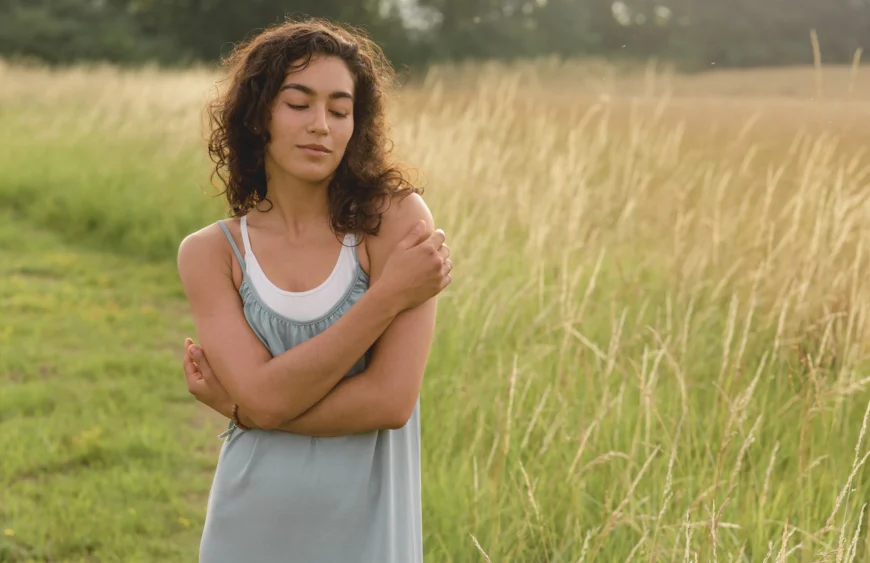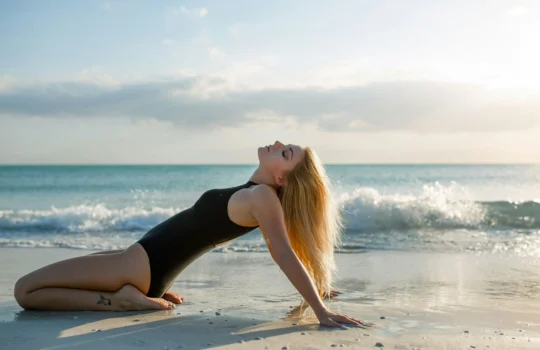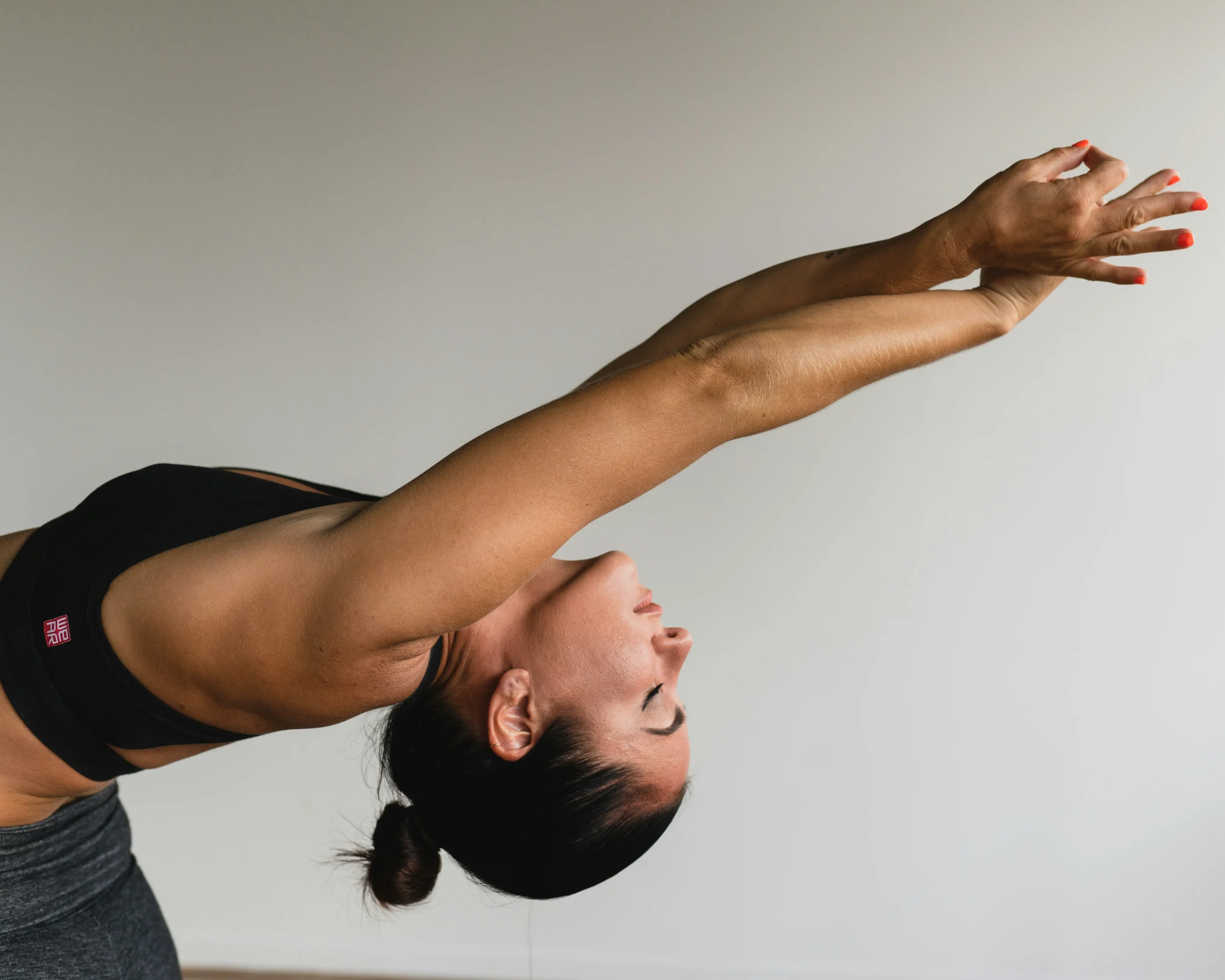Let’s talk about something super important today: self-compassion. We often shower others with love and kindness but forget to save some for ourselves. It’s time to change that! Yoga is not just about flexibility and strength; it’s a fantastic way to nurture self-love and kindness towards ourselves with easy yoga poses.
In this post, we’re diving into 5 moderate yoga poses that will help you cultivate self-compassion like a pro. Ready to embrace a little more love and kindness in your life? Grab your yoga mat, and let’s get started! 🧘♀️💖
Table of Contents
Benefits of Easy Yoga Poses for Self-Compassion
Physical Benefits
Yoga isn’t just a workout; it’s a way to reconnect with your body. These poses help release tension, improve flexibility, and build strength. When your body feels good, it’s easier to be kind to yourself. Plus, a little movement can boost your mood and energy levels!
Mental and Emotional Benefits
Ever feel like your mind is running a marathon? Yoga can help with that. It promotes mindfulness, helping you stay present and reduce stress. This mental clarity makes it easier to quiet those negative thoughts and embrace self-compassion. Imagine ending each session with a clearer mind and a heart full of love for yourself!
Spiritual Connection
Yoga encourages a deep connection with your inner self. It’s a time to turn inward, listen to your body, and honor your emotions. This spiritual connection is like giving your soul a warm hug, fostering a deeper sense of self-love and acceptance. It’s not just about the poses; it’s about the journey within.
Preparing for Your Self-Compassion Yoga Practice
Creating a Nurturing Environment
Alright, first things first—let’s set the mood! 🌸 Find a cozy, quiet corner in your home where you won’t be disturbed. Light some candles, play your favorite calming tunes, and maybe add a few plants for that zen vibe. This is your sacred space, a little sanctuary where you can focus on YOU.
Essential Yoga Props
No need to go all out, but having the right gear can make a big difference. A good yoga mat is a must. If you have them, grab a couple of yoga blocks, a strap, and a bolster or blanket for extra comfort. These props aren’t just for pros—they help make the poses more accessible and enjoyable. Trust us, your body will thank you!
Mindful Preparation Tips
Before you dive into the poses, take a moment to set an intention. Close your eyes, take a few deep breaths, and think about what self-compassion means to you. Maybe it’s about being gentler with yourself or letting go of harsh self-criticism. Whatever it is, hold onto that intention as you move through your practice. And remember, it’s all about progress, not perfection. 💪🧘♀️
Before doing these easy yoga poses for self-compassion, do at least 5 sun salutations to be more flexible and avoid any injury.
Easy Yoga Poses 1: Puppy Pose (Uttana Shishosana)
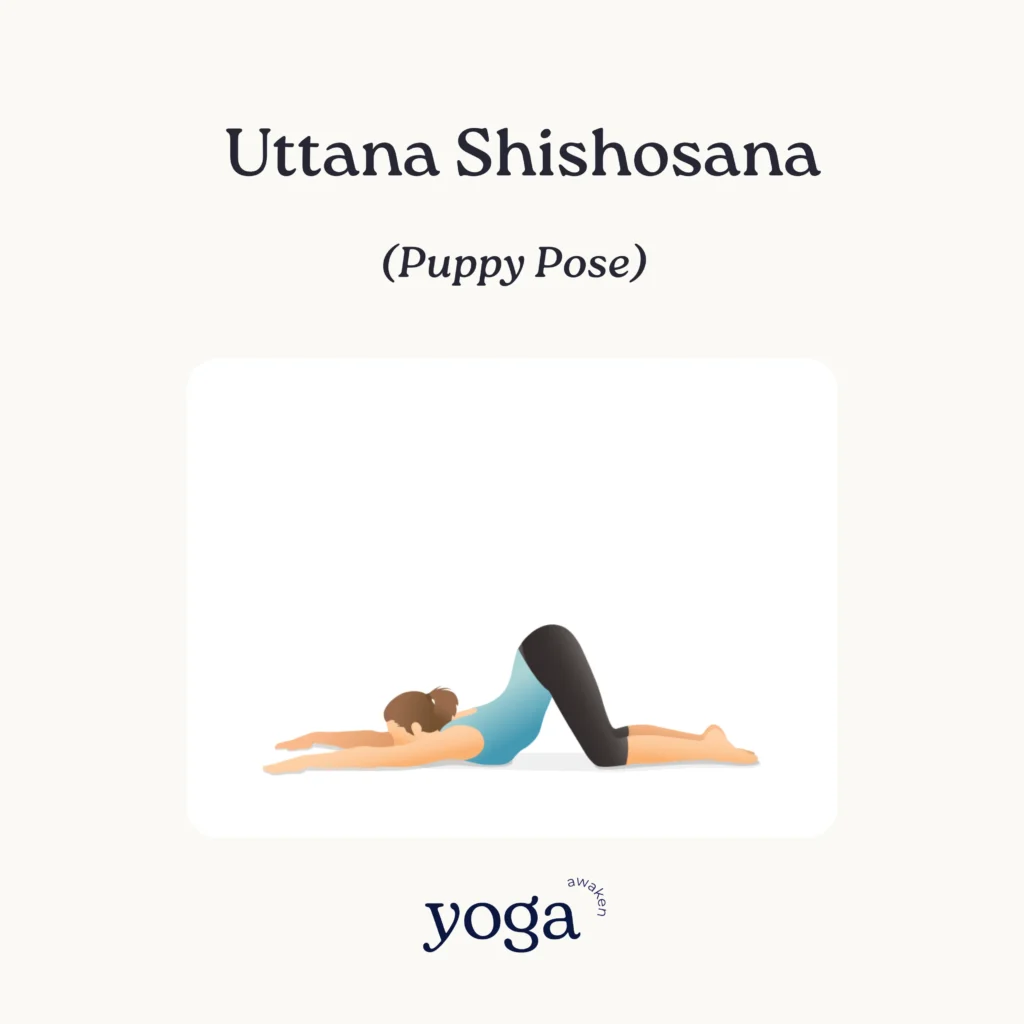
How to Perform Puppy Pose
Let’s kick things off with Puppy Pose—a fantastic way to open up your heart and shoulders! 🐶💕
- Start on all fours: Get on your hands and knees, with your wrists under your shoulders and knees under your hips.
- Walk your hands forward: Keep your hips over your knees as you slowly walk your hands forward, lowering your chest towards the floor.
- Rest your forehead: Lower your forehead to the mat or a block, extending your arms fully and spreading your fingers wide.
- Breathe deeply: Stay here for several breaths, feeling the stretch along your spine and the opening in your chest.
Benefits for Self-Compassion and Flexibility
Extended Puppy Pose is a heart-opener, perfect for releasing stress and inviting in feelings of self-love. It stretches the spine, shoulders, and upper back, helping to melt away physical tension. Plus, this pose can make you feel more open and vulnerable, paving the way for greater self-compassion.
Read more about how to build self-compassion with yoga by Yoga International.
Tips for Deepening the Experience
To get the most out of this pose, focus on your breath. With each inhale, imagine filling your heart with love and kindness. With each exhale, release any negative thoughts or self-judgments. If you want a deeper stretch, try lifting your hips slightly higher or gently pressing your chest closer to the floor. And remember, it’s all about what feels good for your body—listen to it and honor its limits. 🌟💖
Easy Yoga Poses 2: Pigeon Pose (Eka Pada Rajakapotasana)
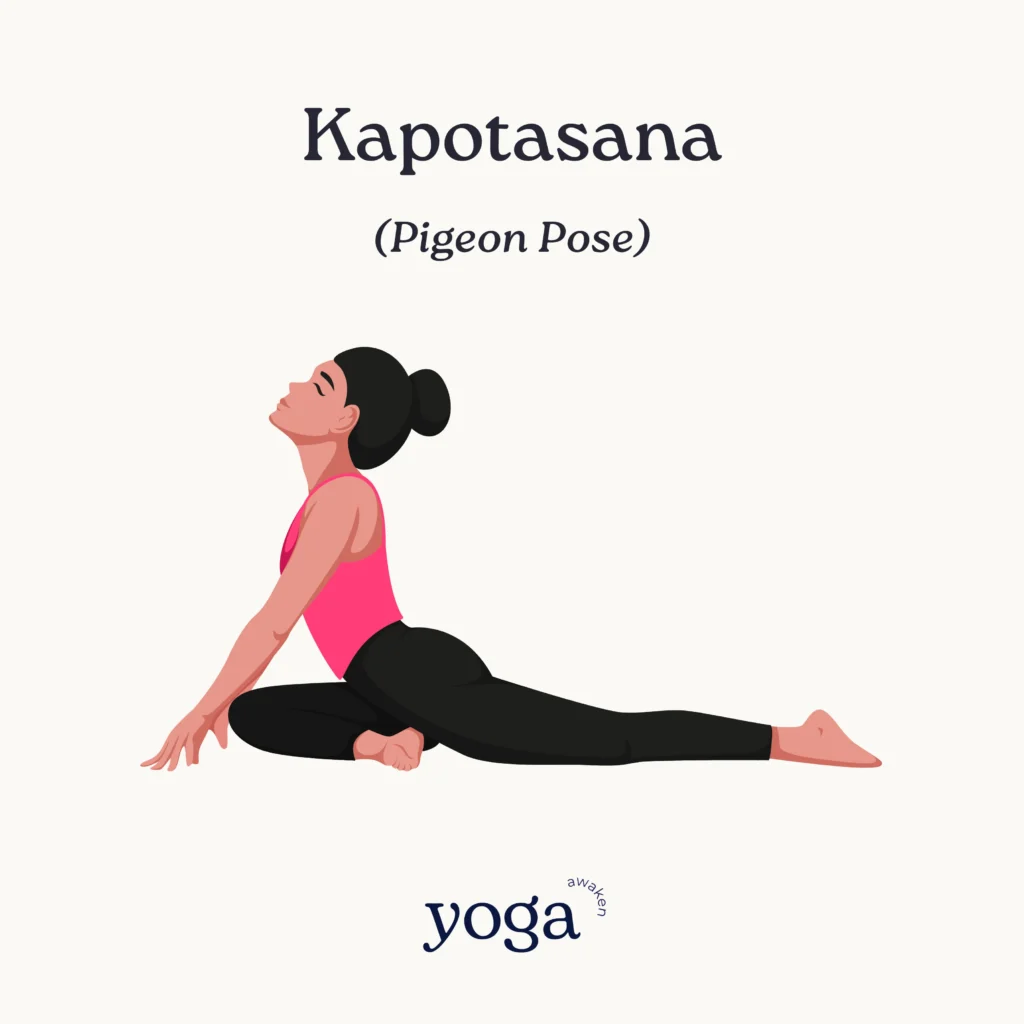
How to Perform Pigeon Pose
Next up, let’s dive into Pigeon Pose—a go-to for deep hip opening and emotional release. 🕊️✨
- From Downward-Facing Dog: Start in Downward-Facing Dog, then bring your right knee forward towards your right wrist.
- Position your leg: Place your right shin on the mat, parallel to the front edge of your mat as much as possible. Extend your left leg straight back, keeping your hips square to the front.
- Lower your torso: Slowly lower your torso over your front leg, extending your arms forward or resting your forearms on the mat.
- Hold and breathe: Stay in this pose for several deep breaths, then switch sides.
Opening the Hips for Emotional Release
Pigeon Pose is a powerhouse for releasing stored tension in the hips, which can often harbor stress and negative emotions. By opening up this area, you’re not just improving flexibility—you’re also letting go of emotional baggage. It’s a beautiful way to show your body some love and compassion.
Modifications for Comfort
If you find Pigeon Pose challenging, don’t worry! Use a block or blanket under your hip for extra support. You can also keep your torso more upright if leaning forward is too intense. The goal is to feel a gentle stretch without pain—so make any adjustments needed to find your sweet spot. And as always, breathe deeply and let go of any judgments. Your practice, your pace. 🧘♀️🌼
Easy Yoga Poses 3: Camel Pose (Ustrasana)
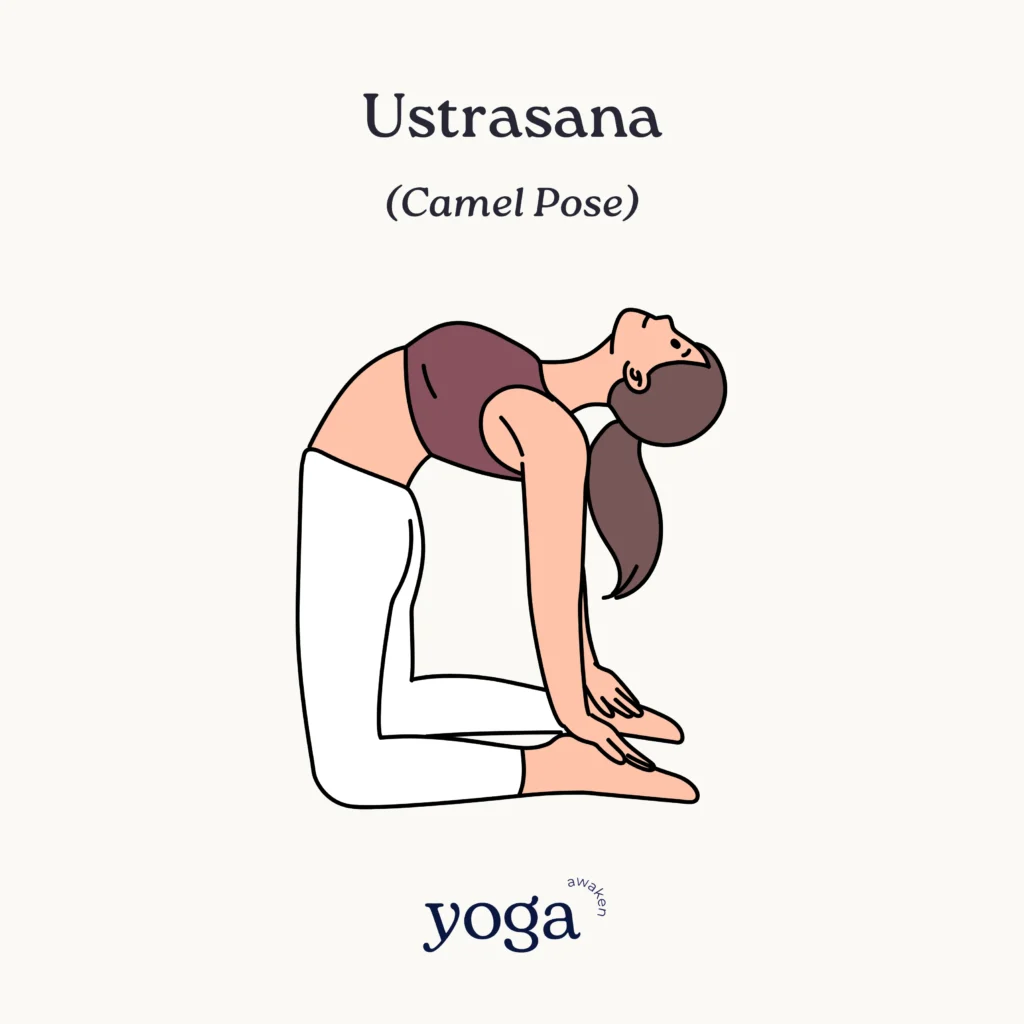
How to Perform Camel Pose
Get ready to open your heart and boost your confidence with Camel Pose—a fantastic backbend that’s all about embracing vulnerability and self-love. 🐪❤️
- Start on your knees: Kneel on the floor with your knees hip-width apart. Place your hands on your lower back with fingers pointing down.
- Lift through your chest: Inhale and lift your chest upwards, creating length in your spine.
- Reach for your heels: Gently lean back, reaching one hand at a time to grasp your heels. If this feels too intense, keep your hands on your lower back.
- Open your heart: Press your hips forward, and allow your head to gently fall back, keeping your neck relaxed.
- Breathe and hold: Hold the pose for several breaths, feeling the stretch across your chest and the opening of your heart.
Enhancing Self-Compassion and Heart Opening
Camel Pose is a powerful heart-opener, perfect for breaking down emotional barriers and inviting in self-compassion. This pose can help you feel more open and receptive, making it easier to connect with your inner self and foster self-love.
Alignment Tips for Safety
To avoid straining your back, focus on lifting through your chest and keeping your lower back long. Engage your core to support your spine and ensure that your hips stay over your knees. If you feel any discomfort in your lower back or neck, come out of the pose slightly and find a position that feels safe and comfortable. Remember, it’s about opening your heart, not forcing your body. Take it slow, breathe deeply, and listen to what your body needs. 🌟💖
Easy Yoga Poses 4: Half Moon Pose (Ardha Chandrasana)
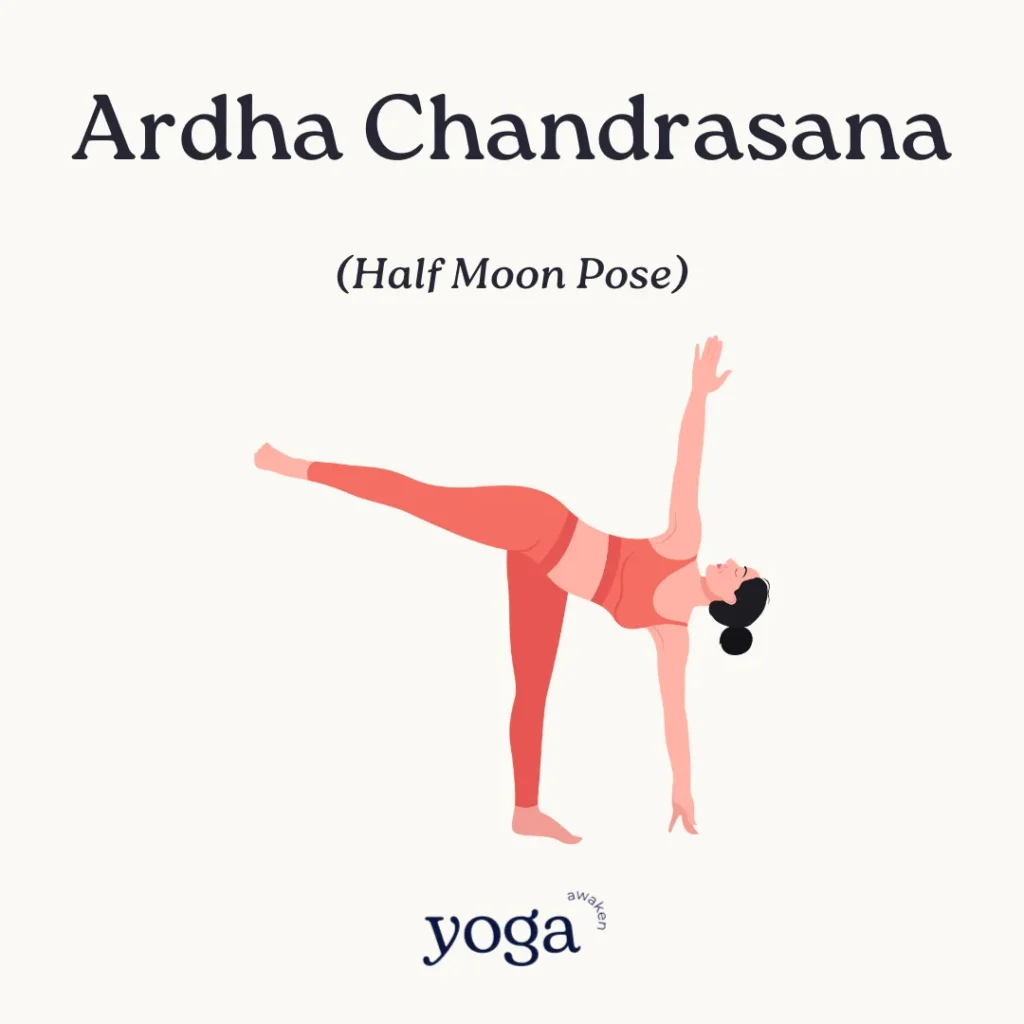
How to Perform Half Moon Pose
Let’s take things to the next level with Half Moon Pose—a dynamic balance pose that will help you find stability and inner strength. 🌙✨
- Start in Warrior II: Begin in Warrior II with your right foot forward. Make sure your right knee is directly over your ankle.
- Transition to Half Moon: Place your right hand on the mat (or on a block) about a foot in front of your right foot.
- Lift your back leg: Shift your weight onto your right foot and hand, and lift your left leg parallel to the ground. Your left foot should be flexed and your left leg straight.
- Open your chest: Rotate your torso to the left, stacking your left hip over your right hip. Extend your left arm straight up toward the ceiling, forming a straight line from your left hand to your right hand.
- Find your gaze: Keep your gaze on the ground, straight ahead, or up at your left hand, depending on what helps you balance best.
- Breathe and hold: Hold for several breaths, then slowly lower your left leg back to Warrior II and switch sides.
Building Balance and Inner Strength
Half Moon Pose is excellent for improving balance and coordination while strengthening your legs, core, and spine. This pose encourages you to find equilibrium both physically and mentally, promoting inner strength and confidence. Balancing poses like this one can be empowering, helping you to feel grounded and capable.
Tips for Stability and Confidence
To make Half Moon Pose more accessible, use a block under your hand for extra support. Engage your core muscles to help maintain balance, and keep a slight bend in your standing leg if needed. Focus on a fixed point in front of you to help stay steady. Remember, it’s okay to wobble or fall—every effort brings you closer to balance and self-compassion. Practice patience and celebrate your progress, no matter how small. 🧘♀️💫
Easy Yoga Poses 5: Reclining Bound Angle Pose (Supta Baddha Konasana)
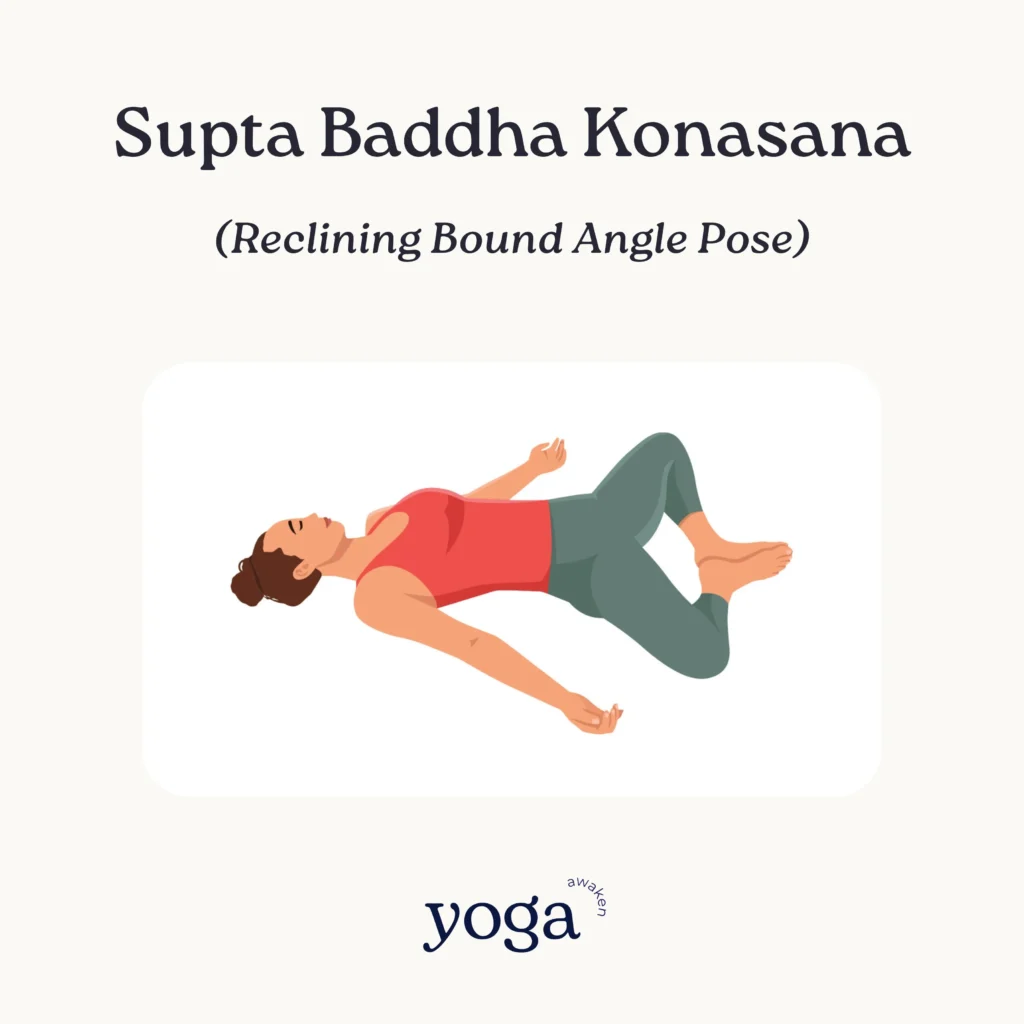
How to Perform Reclining Bound Angle Pose
Finish your self-compassion yoga practice with Reclining Bound Angle Pose—a deeply restorative pose that promotes relaxation and introspection. 🦋💤
- Lie on your back: Begin by lying flat on your back, with your legs extended.
- Bring the soles of your feet together: Bend your knees and bring the soles of your feet together, letting your knees fall open to the sides.
- Support your knees: Place cushions or yoga blocks under your knees for support if needed.
- Position your arms: Rest your arms comfortably at your sides, palms facing up, or place them on your belly or heart.
- Breathe and relax: Close your eyes, take deep breaths, and allow your body to fully relax into the pose. Stay here for several minutes, focusing on your breath and the sensations in your body.
The Importance of Reclining Bound Angle Pose
Reclining Bound Angle Pose is a perfect way to end your yoga session. This pose opens the hips and chest, promotes relaxation, and encourages introspection. It’s a gentle way to release tension and stress while fostering a sense of peace and self-compassion.
How to Fully Relax in this Pose
To enhance relaxation, focus on your breath and let go of any tension in your body. Imagine each inhale filling you with positive energy and each exhale releasing any negative thoughts or feelings. You can also use a bolster or folded blanket under your back for extra support and comfort. This pose is all about surrendering and embracing self-compassion, so make any adjustments needed to feel completely comfortable and supported.
Integrating Self-Compassion in Final Relaxation
As you lie in this pose, bring to mind affirmations of self-compassion and kindness. Repeat phrases like “I am worthy of love,” or “I treat myself with kindness and respect.” Allow these affirmations to sink in with each breath, creating a deep sense of self-acceptance and inner peace. This is your time to nurture and honor yourself, so soak in every moment of this restorative pose. 🌸🧘♀️
Creating a Daily Self-Compassion Yoga Routine
Setting Intentions for Self-Compassion
Start each practice by setting a clear intention. This could be as simple as “I choose to be kind to myself” or “I honor my body and mind.” Setting an intention helps focus your practice and reminds you to cultivate self-compassion throughout your session. It’s your personal mantra, guiding you back to self-love whenever your mind starts to wander. 🌼✨
Combining Poses for a Holistic Practice
For a well-rounded self-compassion routine, mix and match the poses we’ve discussed:
- Begin with Puppy Pose (Uttana Shishosana) to open your heart and shoulders.
- Move into Pigeon Pose (Eka Pada Rajakapotasana) to release tension in your hips.
- Follow with Camel Pose (Ustrasana) to further open your heart and build confidence.
- Transition to Half Moon Pose (Ardha Chandrasana) to improve balance and inner strength.
- End with Reclining Bound Angle Pose (Supta Baddha Konasana) for deep relaxation and introspection.
This sequence can be adjusted to suit your time and energy levels. Even practicing just a few poses can make a big difference. The key is consistency and mindfulness. 🧘♀️💖
Tracking Your Self-Compassion Progress
Keep a journal to document your yoga practice and self-compassion journey. Write down your intentions, how you feel before and after each session, and any insights or emotions that arise. This helps you reflect on your growth and stay committed to nurturing self-compassion. Celebrate small victories and progress, no matter how minor they may seem. Your journey is unique and worth acknowledging. 📖🌟
Tips for Staying Committed
- Schedule your practice: Set a specific time each day for your yoga routine to create a habit.
- Keep it flexible: Some days you might have 10 minutes, other days 30. Adapt your practice to fit your schedule.
- Stay motivated: Join online yoga communities, follow inspiring yoga instructors, or practice with a friend to stay engaged and motivated.
- Be kind to yourself: If you miss a day, don’t stress. Self-compassion includes being gentle with yourself when things don’t go as planned. Simply start again the next day. 🌈🌞
Conclusion of Easy Yoga Poses for Self-Compassion
By integrating these moderate yoga poses into your daily routine, you can cultivate a deeper sense of self-compassion and inner peace. Remember, the journey to self-love is ongoing, and each step on your yoga mat brings you closer to a more compassionate and loving relationship with yourself. Embrace the practice, celebrate your progress, and continue nurturing your body, mind, and spirit with kindness. Namaste. 🙏💕
You can visit Yoga Journal for more yoga poses for self-compassion.
Read more about:

